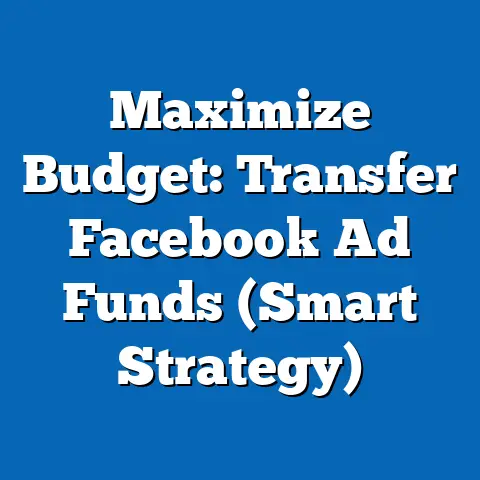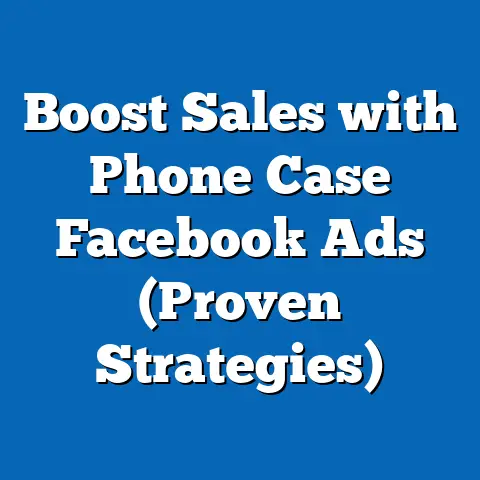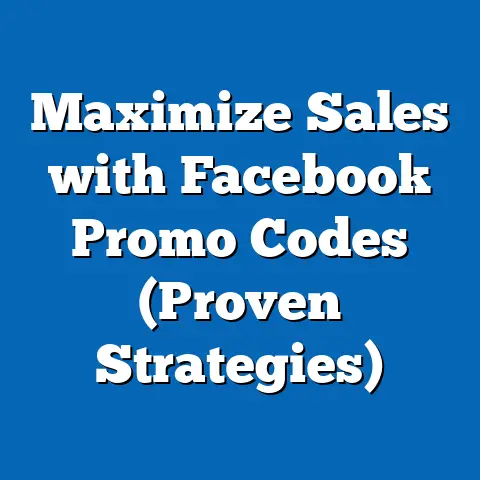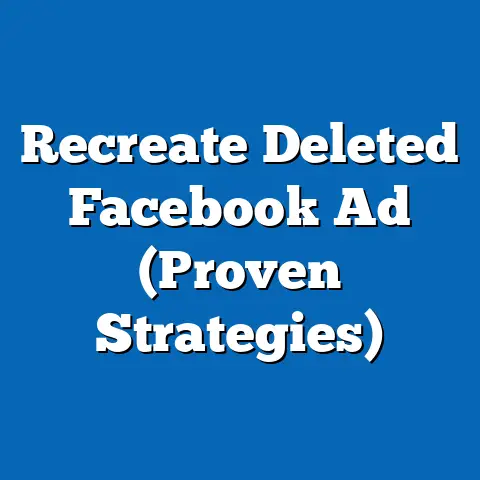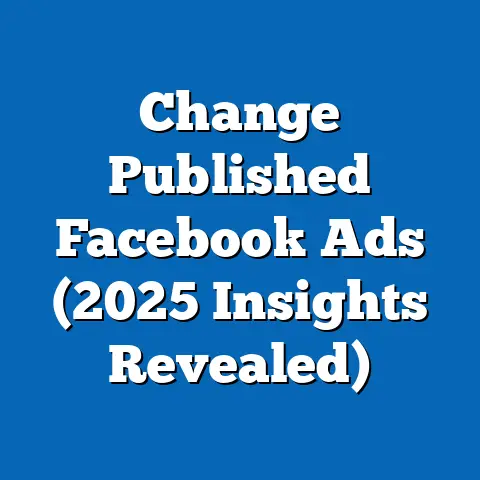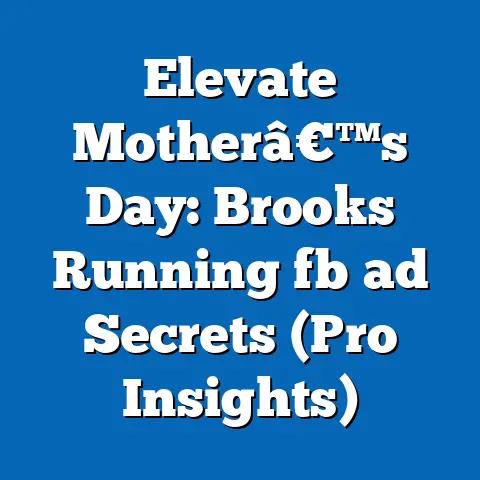Why Are Ads in My Facebook Notifications? (Insightful Breakdown)
We’re going to explore the history of Facebook advertising, understand what makes notification ads unique, and delve into the cost-effectiveness that makes them so appealing to businesses. I’ll also touch on the psychological aspects of how we, as users, interact with these ads and discuss the implications for both advertisers and ourselves. So, buckle up, and let’s unravel the mystery of why ads are in your Facebook notifications.
The Evolution of Facebook Advertising
Let’s rewind a bit. When Facebook first emerged, advertising was almost an afterthought. Remember those simple banner ads on the side of your screen? They were a far cry from the sophisticated, highly targeted campaigns we see today. The early days were about building a user base and connecting people. Monetization came later, and when it did, it came with a vengeance.
The turning point, in my opinion, was the introduction of the News Feed. This seemingly innocuous feature allowed Facebook to seamlessly integrate ads into the content users were already consuming. No longer relegated to the sidelines, ads became part of the experience. This shift paved the way for more personalized marketing, driven by the mountains of data Facebook was collecting.
Today, Facebook’s advertising model is built on a foundation of data analytics and sophisticated algorithms. Every like, share, comment, and click is meticulously tracked and analyzed to build a profile of each user. This profile is then used to target ads with laser-like precision. It’s this relentless pursuit of relevance that has led to the integration of ads into our notifications – a prime piece of real estate in the digital world.
Takeaway: Facebook’s advertising model has evolved from simple banner ads to highly personalized campaigns integrated into the user experience. This evolution is driven by data analytics and a focus on relevance.
Understanding Notification Ads
So, what exactly are notification ads? They’re not your typical News Feed posts or sidebar banners. Notification ads are designed to mimic the alerts you receive from friends and family – the ones that grab your attention and demand immediate action. They appear in the same space as birthday reminders, friend requests, and messages, making them incredibly hard to ignore.
The mechanics behind these ads are quite clever. Facebook’s algorithms analyze your behavior – what you like, who you interact with, what groups you’re in – and then serve you ads that are deemed highly relevant to your interests. For example, if you’ve been searching for new running shoes, you might receive a notification ad from a sports retailer offering a discount.
The key difference between notification ads and traditional ads is their perceived urgency and personal relevance. Because they appear in the same space as important updates from your network, they carry a certain weight that other ads simply don’t. This makes them particularly effective at driving engagement and conversions. I’ve seen campaigns where notification ads outperformed traditional ads by a significant margin, simply because they felt more personal and less intrusive.
Takeaway: Notification ads are designed to mimic the alerts you receive from friends and family, making them highly attention-grabbing and effective at driving engagement.
The Cost-Effectiveness of Facebook Ads
Now, let’s talk money. Why are businesses so eager to advertise on Facebook, and why are notification ads becoming increasingly popular? The answer boils down to cost-effectiveness. Compared to traditional advertising channels like TV or print, Facebook ads offer incredible targeting capabilities and a relatively low cost per reach.
Facebook’s bidding system allows businesses to set their own budgets and target specific demographics, interests, and behaviors. This means you’re not wasting money on reaching people who are unlikely to be interested in your product or service. And with notification ads, you’re reaching people in a space where they’re already highly engaged.
I’ve worked on campaigns where small businesses were able to compete with larger brands by leveraging the cost-effectiveness of Facebook ads. By carefully targeting their audience and crafting compelling notification ads, they were able to drive significant traffic and sales without breaking the bank.
Here’s a quick example: Let’s say you’re a local bakery trying to promote your new line of gluten-free cupcakes. Instead of running a generic ad campaign, you can target Facebook users in your area who have expressed an interest in gluten-free products or have liked pages related to healthy eating. By crafting a notification ad that highlights the deliciousness and availability of your cupcakes, you can drive targeted traffic to your bakery and increase sales.
I once helped a small, family-owned bookstore in my town use notification ads. They were struggling to compete with online retailers. By targeting local readers with ads about author events and special discounts, they saw a 30% increase in foot traffic within a month. That’s the power of targeted, cost-effective advertising.
Takeaway: Facebook ads, especially notification ads, offer incredible targeting capabilities and a relatively low cost per reach, making them a cost-effective option for businesses of all sizes.
User Behavior and Interaction
Okay, so we know why businesses love notification ads, but what about us, the users? How do we actually interact with these ads, and what psychological factors are at play?
One of the key factors is the element of surprise. We’re conditioned to expect certain types of notifications – messages from friends, event invitations, etc. When an ad pops up in that same space, it can catch us off guard and pique our curiosity.
Another factor is the perceived relevance. If the ad is truly targeted to our interests, we’re more likely to click on it. This is where Facebook’s data collection comes into play. The more information Facebook has about us, the more accurately it can target ads.
However, there’s also a downside. Ad fatigue is a real phenomenon. When we’re constantly bombarded with ads, even highly relevant ones, we start to tune them out. This can lead to decreased engagement and even negative feelings towards the brand. I’ve seen users complain about feeling “stalked” by ads, especially when they’re based on recent searches or conversations.
It’s a delicate balance. Advertisers need to be mindful of not overdoing it and ensure their ads are genuinely valuable and non-intrusive. I always advise my clients to focus on quality over quantity and to prioritize user experience.
Takeaway: User interaction with notification ads is influenced by factors like surprise, perceived relevance, and ad fatigue. Advertisers need to strike a balance between targeting and user experience.
Implications for Advertisers and Users
So, what are the broader implications of ads in notifications for both advertisers and users?
For advertisers, the benefits are clear: increased visibility, targeted reach, and higher engagement rates. Notification ads offer a powerful way to cut through the noise and connect with potential customers in a meaningful way. However, they also come with a responsibility to be ethical and transparent. Misleading or overly aggressive ads can damage brand reputation and alienate users.
For users, the implications are more complex. On one hand, relevant ads can be helpful and informative, introducing us to new products and services that we might actually be interested in. On the other hand, the constant presence of ads can be intrusive and contribute to a feeling of being constantly monitored and manipulated.
The key is to be aware of how Facebook’s advertising system works and to take control of your privacy settings. You can limit the amount of data Facebook collects about you and opt out of certain types of ads. It’s also important to remember that you have the power to report ads that you find offensive or misleading.
Ultimately, the future of advertising on social media platforms will depend on finding a balance between the needs of advertisers and the rights of users. I believe that transparency, ethical targeting, and a focus on user experience are essential for building trust and ensuring a sustainable advertising ecosystem.
Takeaway: Ads in notifications offer benefits for advertisers but also come with responsibilities. Users need to be aware of their privacy settings and take control of their data.
Conclusion
Ads in your Facebook notifications are not a glitch or an oversight. They’re a strategic move by Facebook to enhance ad effectiveness and cost-efficiency for advertisers. They represent the culmination of years of data-driven optimization and a relentless pursuit of relevance.
While these ads can be annoying, they also offer potential benefits for both advertisers and users. By understanding the mechanics behind them and taking control of our privacy settings, we can navigate this evolving landscape and ensure that advertising on social media remains a valuable and non-intrusive experience.
The future of advertising on social media is constantly evolving. As technology advances and user expectations change, we can expect to see even more innovative and personalized advertising strategies emerge. The key is to stay informed, be critical, and demand transparency from the platforms we use. After all, our data is valuable, and we deserve to have a say in how it’s used.

